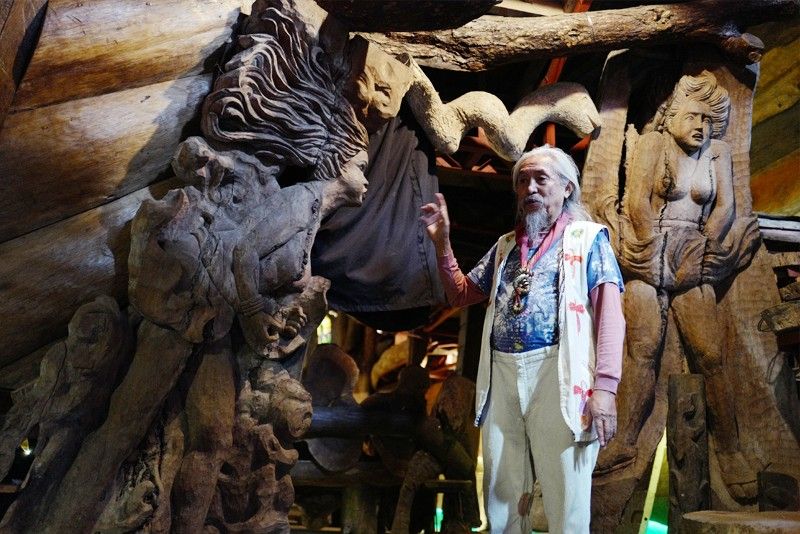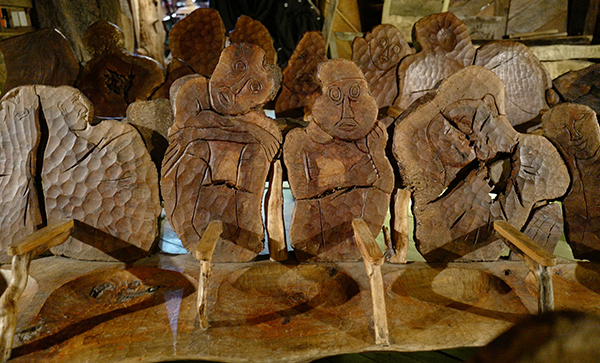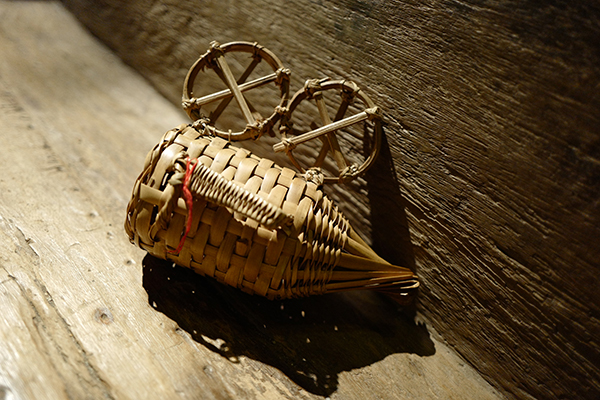Kidlat Tahimik: Brown heat, brown lightning

Kidlat Tahimik explains, “Understanding the nature of colonialism, I mean, it’s like psychoanalysis: you have to first identify what’s inside, and then once you recognize it, you can deal with it.”
Kidlat Tahimik says, ‘The two Goddesses of the Wind are fighting for the attention of the indie filmmaker. In other words, indie has a choice: do we tell the local story or do we tell the blockbuster?’
The man is a walking folklore, archetypal and almost taller than most myths. He can regale you with stories about old gods, new reckonings, and the eternal duende over rounds of the most stainless of gins and the most fragrant of smokes.
He is Kidlat Tahimik, and this is how my colleague Pristine De Leon, who had a chance to interview the man recently, introduces him: “Kidlat Tahimik has been a leading force in independent cinema since the 1970s. Having gained acclaim for films such as as Perfumed Nightmare (1977), Turumba (1983), and Balikbayan #1: Memories of Overdevelopment Redux III (2015), Tahimik established his mark in an industry overrun by canned blockbuster formulas and recurring Western tropes. His works, subverting cinematic conventions, have straddled both the personal and the political, tackling subjects such as neocolonial identity, cultural heritage, and cinema itself. A multi-awarded artist and cultural figure hailing from Baguio, Tahimik sought not only to develop a distinct cinematic language, but to tell a narrative that is uniquely his people’s own.”
I met Kidlat Tahimik only once. It was a group show at the BenCab Museum, and the first thing that struck me about him was how humble and disarming he was. He talked to me candidly about the inspiring duende of poets (of Lorca and his deep songs and dark sounds) — like a wise old man essential in meeting when about to undertake a journey of sorts.
“Whenever I talk to young artists, whether they’re painters, filmmakers, (I tell them) you have to let your duende tell your story, that’s what the world is waiting for. The world is not waiting for Star Wars or Men in Black 285. They’re waiting for your original duende story. (But) it may take time for your original duende story to find its market.”

Objects in the artist’s world
Funny how a popular film producer once told him, “Ang cute ng mga ek-ek mo about kultura, but I need sex-and-violence films in the next 10 minutes.”
And how was he able to let the duende out? Kidlat explains, “I had to recognize the colonial voices that we’re suppressing (it).”
Finally, the man gets his long-due spotlight in one of Art Fair Philippines (AFP) Projects.
“I never thought I would be invited to the art fair, I’m not a visual artist,” says Kidlat. “That’s good, (and) it’s also breaking the barriers. I don’t want to be classified for the rest of my life as just a filmmaker. I do crazy architecture; I do performance; I do installations. Why box me in just because our Western orientation is that everybody has to be specialized? I don’t know. I don’t relish the idea of being just a one-dimensional artist.”
For his AFP installation, Kidlat explores the battle between two goddesses of the winds. And this spills over to metaphors of colonial beauty, independent filmmaking, how indigenous strength can match an international icon created by big money or big resources. The details, he admits, just vary every time.
The two goddesses are Inhabian of Ifugao and Marilyn Monroe of Hollywood.
Inhabian is the Goddess of the Wind of Ifugao. The story is that she was weaving her back-strap loom. She was just an ordinary mortal, so the gods decided to test her. They started blowing down on her. “But because she had her back-strap, parang may seatbelt, ‘di ba,” says Kidlat. She survived the test and the gods made her Goddess of the Wind. “Pag may typhoon approaching, the people pray to her sa Ifugao, ‘Please change direction.’”
And then you have screen goddess Marilyn Monroe.
Kidlat tells an interesting story about his life-size statues of Inhabian and Marilyn.

“We were invited to have an exhibition for the 2017 Miss Universe pageant. They we went to Baguio, and I took the opportunity to plant some seeds in these Miss Universe candidates. I’ve been very critical of the Miss Universe as an objectification of women. In my first film, Perfumed Nightmare, there’s a scene where I just wake up and there’s a Miss Universe poster — and I kiss the poster. It’s about the colonial mind that we have. (So when I met the candidates I told myself I want to) communicate something to these girls.”
The two big statues were put up at the country club. The candidates arrived. Seventeen of them stood before Kidlat Tahimik, including Miss France. “I told them, ‘Here are two beauties. Don’t you agree that our indigenous beauty, Inhabian, can match up to this international beauty created by Hollywood.’ I said, ‘I hope that the judges are really going to be enlightened that when they choose one of you, they will find both the inner beauty to match the outer beauty. Don’t you think that’s important?’ Okay, class dismissed (laughs). I had their undivided attention. I was in my bahag! And I gave them the indigenous wisdom.”
Kidlat talks about a wooden statue of Enrique de Malacca. “This structure is called ‘Balanghay ni Ikeng.’ Everybody thinks Magellan is the first circumnavigator of the globe. Pero I try to challenge that. Magellan had a slave with him and he bought him in Malacca — Ikeng. For me, the first man that had gone around the world is the slave of Magellan.”
When he is asked why do most artists still explore themes dealing with colonialism, Kidlat Tahimik shares, “It’s not just because it’s historically true — that the colonizing forces subdued the indigenous culture. That’s one factor we need to understand in the Philippines, we’re the most Westernized of all the Asian countries. How did that happen? Carmen Guerrero Nakpil wrote once, ‘Filipinos have lived 350 years in the convent and 50 years in Hollywood.’ I think this is why we are such a crazy mix of people.”
The man sighs. “Sayang, ang galing ng kultura ng indigenous people natin. I think we’re really one of the most creative people in the world. But we have been conditioned to think we have to fight under the rules, the protocols.”
Does he think of himself as a creator who has blazed trails for others?
“No, sir. I don’t think I’m a creator. Did I study architecture or interior design? Yeah, I’m a graduate of the Pukpok-Tastas School. That’s why even in this (Art Fair) space what I’m going to do is still pukpok-tastas.”



















